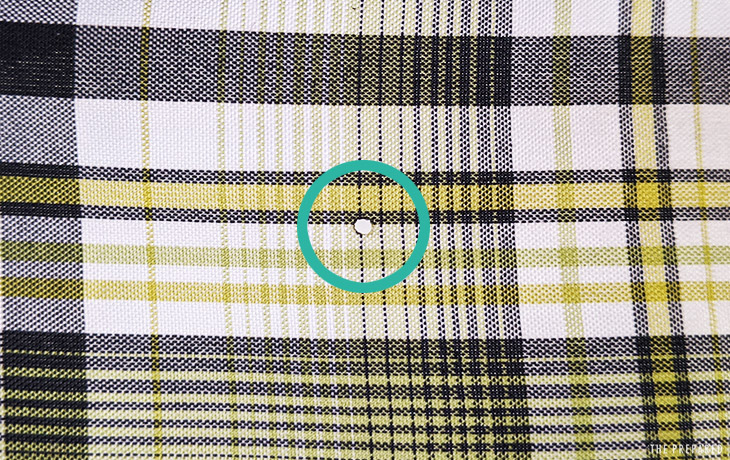Everywhere in my news and social feeds right now, the world is on fire. Last summer, it was California, and now it’s Australia. People are fleeing fires and choking on smoke across the developed world, and no matter where you live you watch and wonder if the fires will at some point come your way.
Even if you’re dead certain you won’t face a brushfire or a wildfire, or even a house fire, fire is still a major feature of many disaster scenarios and austere situations — campfires and nightly cooking fires are the norm anywhere without electricity. In fact, throughout all of human history until the recent rise of the power grid, any given person on any given day was likely to smell of smoke to some degree or another.
I’ve been thinking a lot recently about the overwhelming odds that I’ll be spending lots of time around an open flame if things go sideways, and about what that means for that most basic (but most often overlooked) of disaster preps: clothing.
Specifically, my deep dives into advanced fabrics and technical coatings for our recent tarp and paracord reviews have hammered home a fact that I already knew about materials like polyester, nylon, and polypropylene from my own first-hand experiences with them: synthetics and open flames do not mix.
The problem of fire and synthetics
There’s a reason why firefighters refer to synthetic base layers as “shrink wrap.”
Unlike traditional natural fibers — wool, cotton, hemp, etc. — synthetics don’t burn to harmless ash when exposed to flame. Rather, they melt and sputter until they’re extinguished, and if they’re next to your skin, then you’re in for far more severe burns than a flame alone would give you.
You don’t have to search reader reports for long before you find many, many, many accounts of well-worn gear getting pinholes (or much worse) from the flying embers of a camp fire. Personally, I have pinholed enough synthetic shirts when grilling that I’m always careful with what I wear when I’m manning the Big Green Egg.
Video from one of our tests showing how nylon and polyester strands melt and burn:
Holes in clothing, tarps, packs, tents, and bedding from stray embers happen because the nylon synthetics mentioned above really do not get along well with open flames and flying sparks.
Depending on what it’s mixed with, nylon’s melting point can be as low as 370F, at which point it turns into something very much like an ultra-hot molten wax that you do not want anywhere near your skin. Polyester has a little higher melting point, yet it also both melts and burns with a thick, black smoke.
So if you’re going to camp with synthetic materials, then you really have to take some care to keep it from getting hit by sparks. You also have to resign yourself to the fact that, at some point, your precautions will fail and your stuff will get holes in it.
The need for special precautions around fire is a problem for synthetics as preps, because one of the core considerations we take into account in all of our gear evaluations at The Prepared is that people in emergencies often don’t or can’t take special precautions that recreational campers or even adventure travelers take. Preppers may be dealing with any number of stressors and adverse conditions that cause them to make basic mistakes, which is why we optimize our gear recommendations for durability and forgiveness. You should be able to make a few common, newb mistakes with your preps without ruining them.
When it comes to mixing fire and synthetics, though, the margin for error is pretty much zero. This fact, when combined with how common an open fire is in a survival situation, suggests that maybe having some outer layers made from traditional materials — wool, leather, waxed cotton — may be wise, at least as a backup and/or bug-in option.
Taking another look at natural fibers
The assumption that synthetic outerwear and shelter products won’t last forever in a major grid-down event (since fire will be commonplace) has changed the way I think about clothing and preparedness.
I’ve been begun researching and experimenting with natural fibers, and have even retooled my day-to-day wardrobe to focus more on high-quality traditional materials — everything from exotics like buffalo wool and alpaca wool, to waxed canvas and even cashmere — and less on state-of-the-art synthetics.
I’ll be sharing a lot more of what I’ve learned in future blog posts — specific product recommendations, testing, and reviews — but for now I’ll leave you with a few reasons to consider including more traditional materials in your wardrobe:
- Cotton canvas can shrug off embers fairly well, especially when it’s waxed. And if the weave is tight then it doesn’t light easily when briefly exposed to flame.
- Waxed cotton has a number of benefits for long-term use, namely extremely high abrasion and puncture resistance, a usable lifespan measured in decades, and some amount of water resistance.
- Regular (unwaxed) cotton canvas is very tough and long-lasting, and is easily “waterproofed” in the field by throwing a cheap poncho over it. The cotton duck used in most popular workwear can be easily waxed with aftermarket waxes and a heat gun.
- Natural fabrics are easier to repair in the field with a sewing kit.
- Wool is flame retardant, as it will self-extinguish once the heat source is removed.
- Wool/nylon blends can retain much of wool’s flame retardant properties, if the nylon percentage is low enough (around 20% or so).
https://youtu.be/3TyLmvkis-Y?t=122
Of course, it’s definitely not all upside. Natural fabrics have very real risks and downsides that have be managed (see the old adage, “cotton kills,” for instance), and modern synthetics offer many compelling advantages in the areas of strength, weight, comfort, and versatility. But I’ll have a lot more to say on those tradeoffs as I continue my research and evaluation.
I’ve actually amassed a ton of products — outerwear, base layers, waterproofing materials, the works — all entirely on my own dime, and will be blogging about my findings over the coming weeks. I even spent New Years Day waxing a pair of denim/Dyneema blend cargo pants I got in a Black Friday sale. So watch this space for more, and in the meantime, comment with any specific gear or test ideas!


You are reporting the comment """ by on